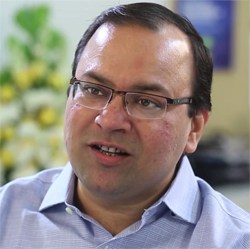 The passage of the Health Information Technology for Economic and Clinical Health (HITECH) Act in 2009 paved the way for an evolving health IT revolution in the US and the adoption of multichannel marketing (MCM) to engage HCPs became almost ubiquitous.
The passage of the Health Information Technology for Economic and Clinical Health (HITECH) Act in 2009 paved the way for an evolving health IT revolution in the US and the adoption of multichannel marketing (MCM) to engage HCPs became almost ubiquitous.
The MCM maturity model was based on an amalgamation of seven components, namely content, channel and analytics, infrastructure, operations, organisation and culture. But the bulk of pharma’s digital spend remained concentrated in identifying channels of engagement, mostly slowing down ROI due to a lack of integration with the other six parameters. Consequently, and with few exceptions, the industry retains its ‘greenhorn’ status.
Pharma companies are certainly having to maintain a fine balance between delivering a great customer experience (Cx) and optimising their operational efficiency (Ox). While the voice of the customer (HCPs) helps gauge how efficient and effective the content being shared by the pharma companies is, operational excellence assesses their efficiency in channelising an organisation’s resources while also delivering great customer experience.
| Cx Excellence | Ox Excellence |
|---|---|
|
Contextualised – tailored content, hyper-segmented |
Scalable – cover all channels, all markets |
|
Measured – performance traction of content |
Automated – Rapid, compliant and consistent |
|
Intelligent –Data-driven content strategy |
At the most nascent level of the digital maturity model, content production is decentralised to the extent that it is produced separately across different countries and channels. At this level, content analytics are out-of-the-box, that is, there are no set and consistent standards applied to the practices. There is no TMS in place, tags are hard-coded and there is no formalised media tracking process in place. The other major issue is the struggle with rates of automation. The least mature are those organisations that mostly use manual processes with only the least bit of automation. At the next level, organisations start using robotic process automation for individual tasks, but that still signals an urgent need for a unified approach.
The other end of the spectrum on the content maturity continuum envisions ‘content-on-demand’. The content at this stage of the maturity model is fully responsive and dynamic. With pre-set algorithms, the channel picks up the next best action, while the content is also tracked intelligently across the journey. As organisations become more digitally mature, multiple platforms evolve into a single platform of record at the enterprise level. There are enterprise-level media tagging naming conventions and enterprise-controlled processes for providing tagging and QA for media assets. At the most mature level, all technology as well as infrastructure enablers become increasingly adaptive and responsive to support new needs, thereby paving the way for end-to-end automation of content strategy, content deployment and content outcomes.
Pfizer, AstraZeneca and Merck fare well on the Cx scores, largely due to the relevance of content provided to HCPs on the go, while Pfizer, Amgen and AZ outscored others on the Ox scores with GSK getting a fair mention, according to a recent digital maturity study.
The diagnosis is clear – the closer the integration between the vertical and horizontal levers of digital maturity, the better the outcomes for all stakeholders in the healthcare value chain.
* Read: The Digital Maturity study
Gaurav Kapoor is co-founder and EVP of Indegene, a leading global healthcare solutions company





